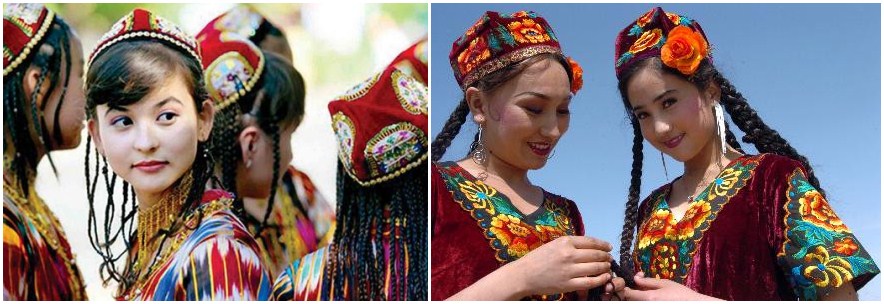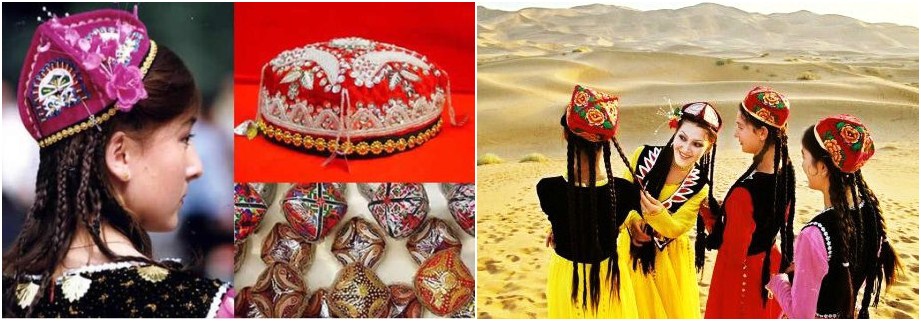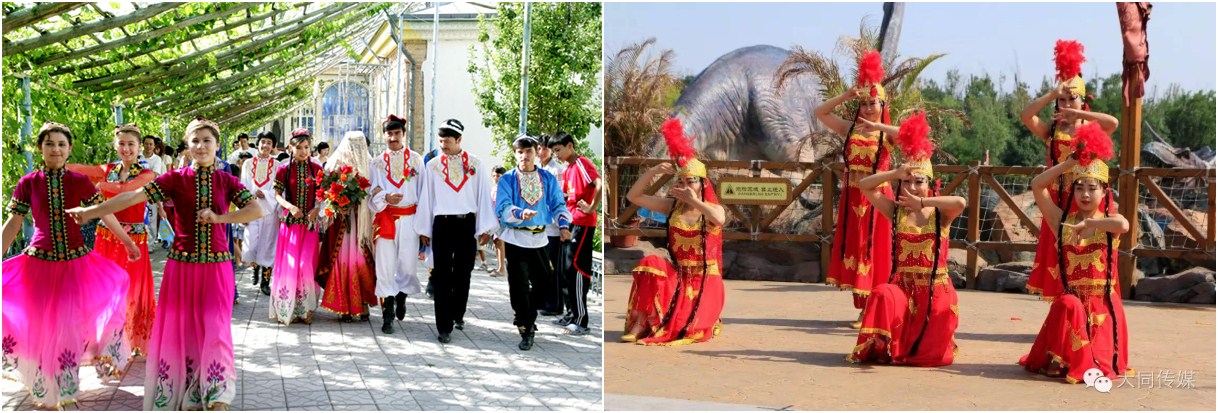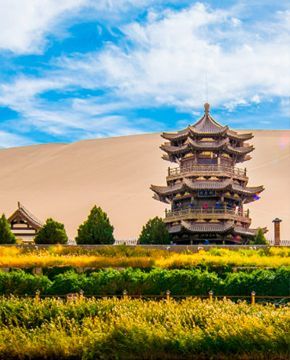The Uygur nationality has a population of over 8 million, the majority of them live in compacted communities of the areas to the south of Tianshan Mountains, such as Kashgar, Hotan and Aksu, and the rest inhabited in yili prefecture and other places in the northern part of Xinjiang.
With long history, the Uygur ancestors can be traced to the third century. The translations of the name “Uygur”(Uigurs) in the ancient Chinese historic records are quite different in different historic period. There are at least five translations, such as Wuhu, Yuanhe, Weihe, Huihe, Uygurs etc. In 1935, the term “Uygur” was authorized and continues to be used until today.

The Uygurs believe in Islam, which is their dominant religion since the tenth century. Furthermore , they have their own written and spoken language. It belongs to the Turkic Group of the Altaic Language Family. The Uygurs have created and developed their own culture during the long and well-documented history in which classical epics and the great work, such as The Dictionary of Turkic Language, are the symbols of their splendid culture.
Uygur men usually wear a long gown , known as “qapan”, with a tilted front and waistband but no button. Women like wearing broad-sleeved piece dresses. Girls arranged their hair into many small braids. The Uygur people, both old and young, men and women, like to wear the four or five angled embroidered hat. The Uygur hats, known as “dopa”, are exquisite handicrafts with bright colors and various designs. The styles vary based on different districts, sexes of wearers, and professions. In addition, the Etles sat in for women' dress and Yengisar knives brought by men are superior handicrafts.
Nang and pulled noodles are daily staple food for the Uygurs. Polo, a special Xinjiang cuisine rice cooked with fresh mutton, carrots, onions, and shish kebab serve in the festivals or to the guests. The shish kebab is well-known snack welcomed by people round the country.
The Uygur house is usually flat-roofed with a small window, a porch with fence and fireplace and a niche inside the house. The fireplace is for cooking and heating while the niche for storing articles of daily use. Both inside and outside are decorated with bright colors and grained ornaments.

Like other ethnic peoples who believe Islamism, the traditional Uygur festivals—Fast—Breaking, or Eid-ul-Fitr in Arabic as well as the Corban Festival, also called the Sacrifice Festival, are two of the most important festivals of Uygurs. During the Festivals, the Uygurs celebrate them with various activities and rituals, so it is during the Festivals that one can see that the most of the Uygue folk customs, Nuroze Festival is a traditional festival of the Xinjiang Uygur people, which celebrates the passing of the cold winter and coming of warm spring. “Nuroze” means “the day of spring rain”, the day of the festival is on the 20th - 23ird of March every year. This is the time with equal length of nights and day time. So Nuroze Festival is a festival to welcome spring. When it is in the mid night of the festival days, people would beat a drum called “Nuroze drum” to tell the locals that festival begins. People who hear the drum beating would come to the place in which the drum is beaten and sing and dance till the dawn. On the second day, people, in their best, would organize various activities and ritual to welcome the coming of spring, and a special food, “Nuroze food” would be offered and songs and dances and games and walking in the filed are typical activities for the festival.
The traditional Uygur festivals—Fast—Breaking, or Eid-ul-Fitr in Arabic as well as the Corban Festival, also called the Sacrifice Festival, are two of the most important festivals of Uygurs. The Uygur has long been known “a nationality of song and dance”. Sanem is the most popular folk dance among all the Uygurs. In a performance of Sanem, one or two dance together; and others sit in a circle, clapping, drumming, which create great excitement. The classical folk music Twelve varieties of tunes and 72 songs while “Meshrep” combine performance of songs and dances for entertainment.




